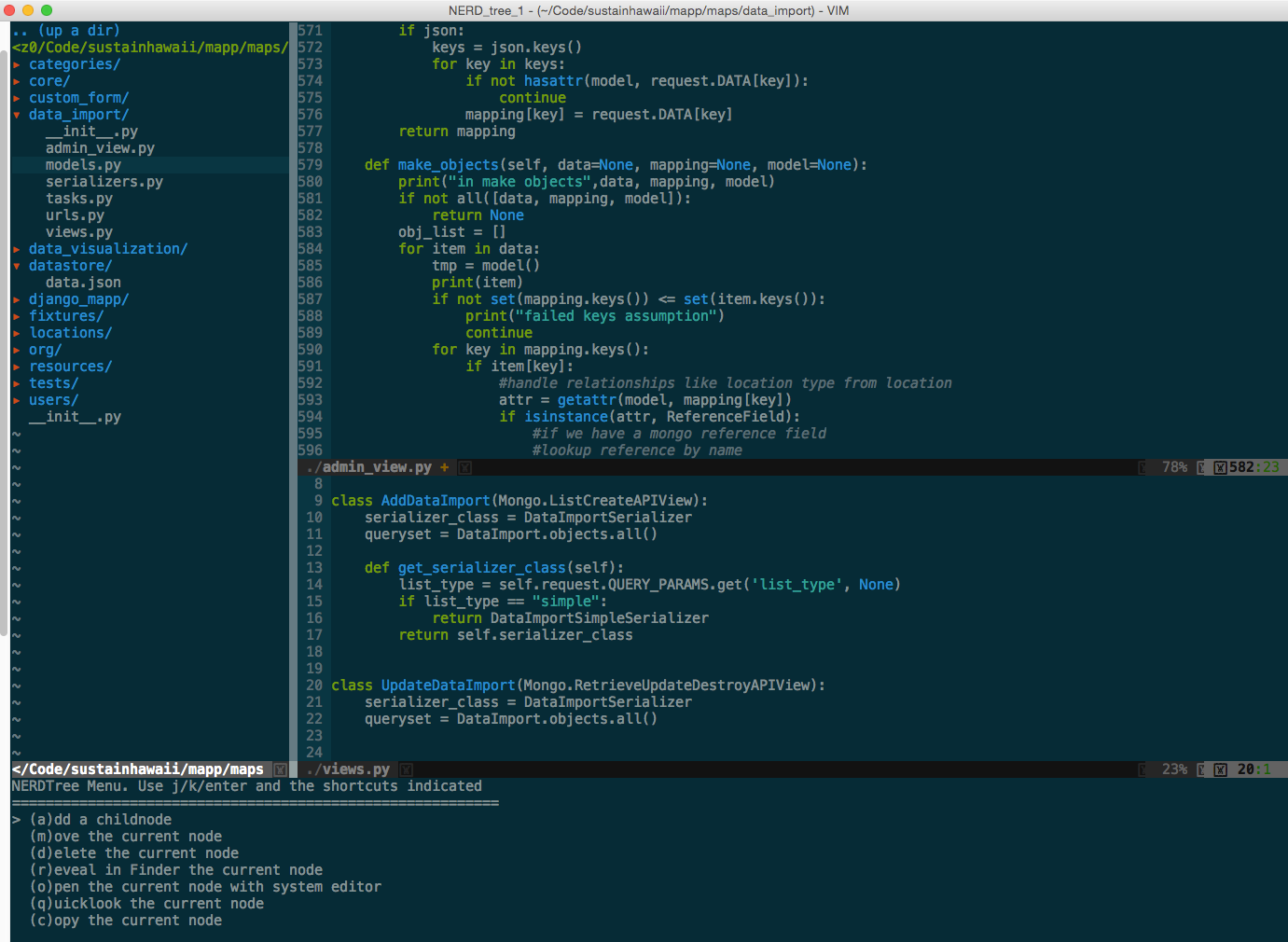
- #Conda install macvim how to
- #Conda install macvim install
- #Conda install macvim update
- #Conda install macvim software
- #Conda install macvim download
#Conda install macvim update
Otherwise, Conda will try to update some packages from the default channels during the removal process, and things may get messy. Note that you need to specify the conda-forge channel. This only removes the QGIS package and will leave all other packages that were installed with it. This is useful if you have other packages installed that you want to keep. Make sure you deactivate it first.Īnother option is to remove QGIS package manually. The quickest option is to delete the entire environment where QGIS was installed.
#Conda install macvim install
Note: Because conda always try to install the latest version, if you want to use the QGIS LTR version, you must specify the QGIS version.Ĭonda install qgis=3.10.12 -channel conda-forge Uninstalling packages
#Conda install macvim download
conda install qgis -channel conda-forgeĬonda will download the latest available version of QGIS and all its dependencies installing it on the active environment. conda-forge is a community-driven repository of conda recipes and includes updated QGIS packages. Installing packages using Conda is as simples as: conda install īecause conda packages can be stored in different channels, and because the default channels (from the anaconda service) do not contain QGIS, we need to specify the channel we want to get the package from. (qgis_stable) deactivate the current environment, you run conda deactivate Installing packages Your terminal prompt will show you the active environment. To use an environment, you need to activate it. Currently versions of QGIS run on python 3.6, 3.7, 3.8 and 3.9.Ĭonda create –name qgis_stable python=3.7 You can choose the version of python to use in your environment by adding the option python=. If, like me, you want to have more that one version of QGIS installed, then the use of environments is mandatory.Ĭreating an environment is as easy as entering the following command on the terminal: conda create -name įor example, conda create -name qgis_stable

I recommend that you always use environments. Basically, it allows isolating different installations or setups without interfering with the rest of the system. Using environmentsĬonda works with environments, which are similar to Python virtual environments but not limited only to python.

Besides, on Windows, you need to use the command prompt that is installed with miniconda. Notice that the Conda tools are used in a command line terminal. The OSX and Linux installers are bash scripts, which means that, once downloaded, you need to run something like this to install: bash Miniconda3-latest-Linux-x86_64.sh Installing QGIS Windows installer is an executable, you should run it as administrator. I prefer the later.įor more information, check this stack exchange answer on anaconda vs miniconda.ĭownload anaconda or miniconda installers for your system and follow the instructions to install it.

Miniconda is much smaller and installs just the packaging system, which is the bare minimum that you need to work with Conda and will allow you to selectively install the tools and packages you need. TL DR Anaconda is big (3Gb?) and installs the packaging system and a lot of useful tools, python packages, libraries, etc….

Two distributions install Conda: Anaconda and Miniconda. Anaconda or miniconda?įirst thing you need to do is to install the Conda packaging system. The instructions and Conda commands should be quite similar for all the operating systems.
#Conda install macvim how to
The following paragraphs explain how to install QGIS using Conda. I was able to work around that limitation by compiling QGIS myself, but with Conda, I can install as many versions as I want in a very convenient way. I am a Linux user, and one of the significant limitations is not having an easy way to install more than one version of QGIS on my machine (for example the latest stable version and the Long Term Release).
#Conda install macvim software
It was created for Python programs, but it can package and distribute software for any language.Ĭonda provides a similar way to build, package and install QGIS (or any other software) in Linux, Windows, and Mac.Īs a user, it’s the installation part that I enjoy the most. Conda easily creates, saves, loads and switches between environments on your local computer. Conda quickly installs, runs and updates packages and their dependencies. Anyway, let’s rewind a bit…Ĭonda is an open source package management system and environment management system that runs on Windows, macOS and Linux. QGIS recipes have been available on Conda for a while, but now, that they work for the three main operating systems, getting QGIS from Conda is s starting to become a reliable alternative to other QGIS distributions.


 0 kommentar(er)
0 kommentar(er)
